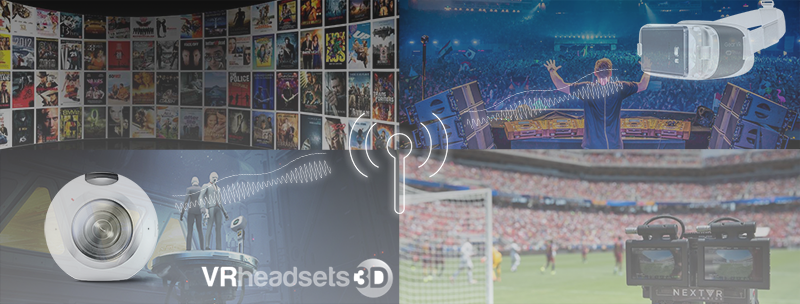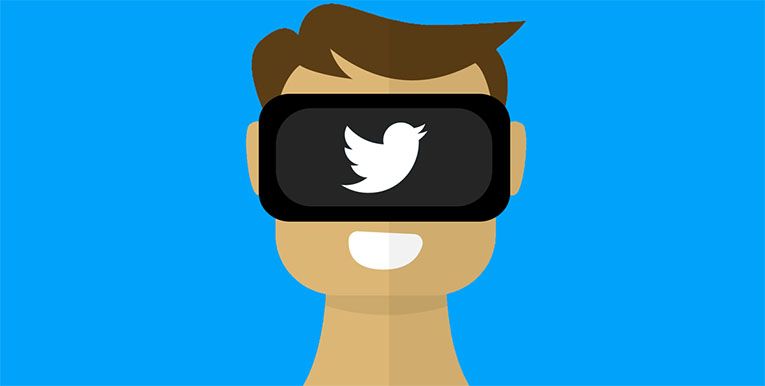Virtual reality is to the 2010s what Internet was to the 90s, with some of the most captivating and ground-breaking technologies changing the way humans interact with the world and each other.
Although the technology has faced many challenges and still has a long way to go, 2016 was full of impressive developments, and 2017 promises more and better.
With the October 2016 release of the Sony PlayStation VR, there are now six mainstream options for consumer VR headsets, categorized as either tethered (to a PC or game console) or Mobile (using a smartphone). Previously, the HTC Vive held the distinction of the most complete VR experience available, but the high price of $799 was a bit too expensive for the average household.
The Oculus Rift was the first of the biggies released, in March of 2016, and came in at $200 less in price. The Sony PlayStation VR knocked both the Vive and Rift out of the water in price and experience at $399 providing some of the best technology to date. The LG VR360, Samsung Gear VR and Google Daydream (replacing the Cardboard) are all considerably lower in price, but rely on a mobile device and app to work.
What to expect in 2017
Who will be better, faster, cheaper in the end? 2017 continues to see a slew of VR start-ups, content creators and media companies popping up. Billions are being spent in the race to see who comes out on top with a full immersion experience. Other companies are using current technology to improve existing apps and experiences that are already popular. Either way, these mainstream online experiences are already reaping the rewards of enhanced reality.
Will 2017 be the year of VR Gaming
It’s no secret that video gaming was the first intended arena for virtual reality. At the International DOTA 2 Championship in Seattle (August 2016), Valve introduced the DOTA VR Hub, which gave fans the opportunity to watch the tournament in three unique VR modes. They could watch from the arena with thousands of fans, have the overhead view as if they were flying above the game or be entrenched in the middle of the game.

Source: Gamespot.com
In January of 2017, eSports platform Silver.tv announced its partnership with ESL and DreamHack to live stream all ESL, IEM and DreamHack events in full 360 virtual reality, with live replay and statistics available for the viewer. Competitive VR play is still in the works for gamers with games like RIGS Mechanized Combat League for PlayStation VR in development.
Esports video games are not the only ones taking advantage of current VR technology to enhance playing and viewership. Online casinos can create an elevated social aspect to their games. Some of the largest online casinos offer live streaming games, where players can join a live game with other players from around the word day or night. Almost 2 billion people gamble during any given year and almost half of those have gambled online at some point. Those numbers would increase dramatically if virtual reality could transport players to the glamour of Monte Carlo, the energy of Macau or the glitz of Las Vegas without ever leaving home.
Livestream Video
3.25 billion hours of video are watched by over 1 billion users on YouTube every month, and the number keeps growing. That is almost one-third of all the people on the Internet. Recently, YouTube introduced their own VR channel, favoring the inexpensive Google headset and Google Daydream and Cardboard app as the medium. PlayStation jumped on board when its headset was released, leaving Oculus Rift and HTC Vive in the dust as far as live streaming video.

Twitch, which primarily streams video games and gamers live feeds, attracts more than 45 million gamers each month to broadcast, watch and chat about games. Here, Oculus Rift rules the platform. Seattle based VREAL has developed a VR system that works with any screen, with or without a headset. It still has some distance to go to equal the headset experience, but it is unique in its “single shared social environment” that allows players and viewers to interact.
Social Media
It’s no surprise that Facebook’s Mark Zuckerberg has big plans for VR given his purchase of Oculus in 2014. While FB is busy developing its own gaming platform, it already offers Facebook360° featuring immersive and interactive videos. With the upgrade to LIVE streaming videos, it’s only a matter of time before the almost 2 billion users get a more virtually immersive social experience. While the Oculus Rift is still the PC headset for use with Facebook VR, FB just released an app for using Samsung Gear VR for mobile use.

Source: uploadvr.com
At the very end of 2016, Twitter flipped the VR switch for 360° livestreaming on their Periscope app. It was no surprise, given their mid-year hire of Alessandro Sabatelli as the new Director of VR and AR. They also acquired Magic Pony Technologies, a machine learning company with applications for VR and AR.
From movies and television moving into the virtual reality realm with major corporations like Netflix creating VR apps to virtual reality in travel on this planet and beyond, the implications of VR technology are endless. Even the bulky headsets won’t last as we move towards smart contact lenses, which will create the need for boundaries and etiquette to be established as VR infiltrates every area of our lives. Virtual reality could very well become the preferred reality as it advances beyond what most are capable of in real life.
Read More
Best VR Headset 2017 – Buyer’s Guide





